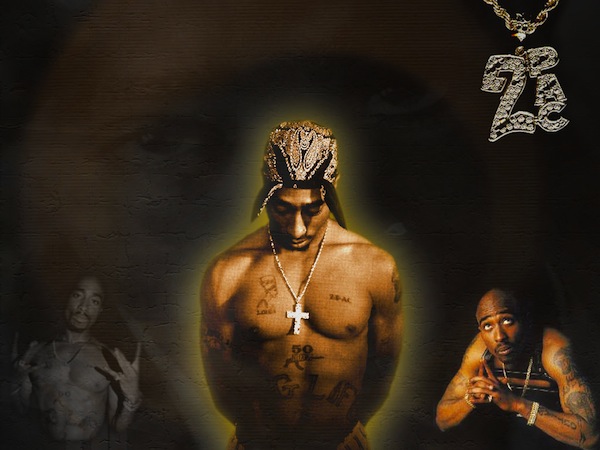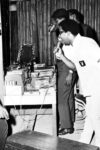
Image via thekollection.com
I am collecting a pop martyrology.
Like the Romans, we have made the martyr into a figure of cultural distinction, and our rockers, rappers, and pop stars have in turn embraced martyrdom as the highest form of expression. Pop martyrdom has enshrined a romantic ideal of the artist as saint, even as pop martyrology has become more diffuse and fragmented than its Roman precursors. David Foster Wallace, Amy Winehouse, and Alexander McQueen are not collected in one book with title page, gruesome illustrations, and index.
Our lists of artistic heroes now consist almost entirely of people who suffered and died for their personal visions. But instead of volumes listing every martyr and their horrible ends, we have documentaries and museum exhibits to record sacrifice and saintliness. This new development in the cult of celebrity celebrates an artist’s work on the basis of personal tragedy, not the work itself.

Jason Bell’s work has recently appeared in Guernica, Vice, The Brooklyn Quarterly, and Alimentum. He writes a monthly column for Full Stop about food and culture and lives in New Haven, CT, and St. Louis, MO.
Besides painting all criticism as heretic, immoral, or pagan, martyrology has turned trendiness into a vicious policing of dissent. To disagree with the importance of an artist (and the importance of their tragedy) is to reveal a vulgar and debased sensibility. More dangerously, pop martyrology has substituted artist for artwork as the object of attention, narrowing the range of what counts as art or beauty or feeling even as the argument is advanced for a more inclusive set of values. Worse, the persona celebrity exists solely to stand in for a reductive (and usually semi-religious) belief system — anti-consumerism / punk being one obvious example.
Because pop martyrology is a fetish, it needs a fetish object, a totem that draws the consumer into the circle of genius. Perhaps this is a natural development from the relic and reliquary. Instead of a bone chip or bloody cloth or splinter from the true cross, we have the notebooks in which our artists-cum-martyrs left the signs of moral inspiration — a la Montage of Heck (documentary; Kurt Cobain), Eyez On Me: The Writings of Tupac Shakur (exhibit), and Basquiat: The Unknown Notebooks (exhibit; Jean-Michel Basquiat). These histories treat the notebook as a source of unique insight into the soul of a hero. They reveal the torment and tragedy, along with the hope and vision, of lives sacrificed (too soon) for a sacred cause: art that played within but never accepted the terms of the culture industries. Yet it seems to me that these histories inevitably diminish the artistic significance of Cobain’s, Tupac’s, and Basquiat’s work.
Kurt Cobain’s art does not need to be justified by the enormity of his pain. His songs express suffering and anger so universal that he remains one of the best-selling musicians of all time two decades after his death. The new HBO documentary Montage of Heck sets out to prove that Cobain was a great artist not on the basis of his art, but rather on a claim to the intensity of his personal anguish. The documentary’s tour through Cobain’s notebooks links Cobain’s private world and his pop career. But this obsessive emphasis on the notebook dampens the artistic power of the music by amplifying Cobain’s cult of personality. Montage of Heck might as well be titled The Martyrdom of Kurt.
For example, one of the most disturbing sequences in Montage focuses on Cobain’s sexual adventures with a mentally handicapped girl. Reconstructed through rotoscoped animations that illustrate and distort Cobain’s notebooks, the rape fits into a narrative of Cobain as a tortured, deviant, but good-hearted creator. The documentary uses special effects to bring Cobain’s journals, sketches, and handwritten lyrics to life. The static images and text are stylized and spring into motion, providing the viewer with a glimpse into Cobain’s creative process. Cobain’s agony — and the pain he inflicts on others — are digitally altered in order to claim an inseparable bond between harm and Nirvana. Cobain’s suicide, which concludes the film, is a perversely satisfying end because martyrology demands it.
This version of Cobain, as the Christ-like Lucifer or the Luciferian Christ, is a contemporary and increasingly common take on pop martyrology. But because a martyrology is a moral story, and one that relies on religious ritual, the range of interpretations opened by this approach to Cobain or anyone who died so young is limiting. That’s why Montage left me wondering about how we can listen to Cobain from now except as a symbol.
An exhibit on Tupac Shakur currently on display at The Grammy Museum in Los Angeles offers an interesting contrast to Montage. Where Montage transforms and stylizes the notebook’s entire contents as an archive of harm, Eyez On Me refuses to display more than one page at a time. The representative sample becomes in turn a technique of stylization: to make Tupac into a loving revolutionary. Rather than a straightforward martyrology, we’re presented with a hagiography. Tupac died too young, we’re told in a video interview with his mother. He had planned to open a series of “Thug Mansions” around the country to get young adults off the streets. The details of Tupac’s death (murdered at age 25) are never mentioned in the exhibit. We get display cases filled with his notebooks, one case dedicated to his prison writings composed while serving time on a sexual assault charge. There is no attempt to justify Tupac’s music as art on the basis of his oppression or pain — we understand that his music is an expression of a struggle for survival and freedom.
Basquiat: The Unknown Notebooks, on view at The Brooklyn Museum, stylizes the notebook to similar effect. The curators have deconstructed Jean-Michel Basquiat’s notebooks to display each page separately under glass, the cardboard covers empty reminders of the original form. This curatorial choice was authorized on the grounds that Basquiat intended each page as an independent artwork. Basquiat, who died at 27 of a heroin overdose, receives the least martyrological treatment of these three young men. He is not a pop art savior but bows at the curtain as an artist — and so the notebooks have been stylized to resemble a series of autonomous artworks.
The basic problem remains first, how to present a notebook (an archival object) to the public: scanned and digitized on a monitor, in facsimile, animated, whole, or deconstructed; and second, how to use the notebook to tell a story about an artist: tortured genius and martyr, tortured saint and martyr, tortured artist and martyr, or none of the above. Unfortunately, there is no method available to provide unmediated access to the notebook. The public cannot hold Cobain’s, Tupac’s, or Basquiat’s notebooks in hand, flip the pages, cradle their spines. The notebook fetish will always introduce an added element of directed reading, a direction to understand the life and work of these artists in terms of martyrology. We are thus encouraged to read Cobain, Tupac, and Basquiat as uncomplicated rebels fighting against and failing to triumph over corporations, consumerism, and celebrity; as embodying a tragic and sensitive genius, romantic (and Christian) at heart; and as a product that we can incorporate, consume, and celebrate in our own lives, for our own pleasure.
This post may contain affiliate links.







